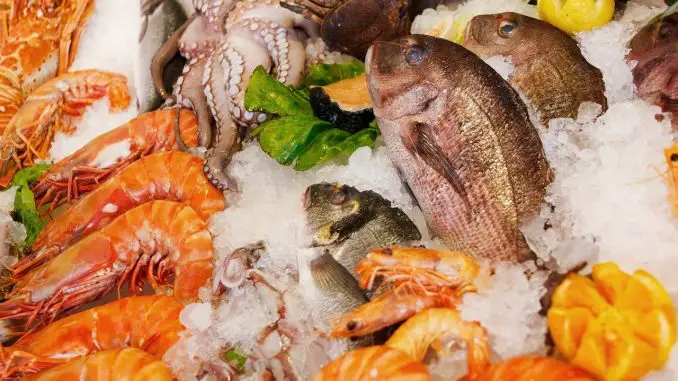
For the health it is good to eat seafood 2-3 times a week, and to vary the choice of fish. Varying the varieties is also good for the environment, as it reduces the pressure on a few species.
To a large extent, seafood is a wild resource that we must maintain. In order to be able to eat fish even in the long term, it is important that the fish be caught or cultivated in a sustainable way.
Today, there are three eco-labels related to fish – MSC (Marine Stewardship Council), ASC (Aquaculture Stewardship Council) and Requirements. The ecolabelling guarantees that the fish comes from stable stocks that are sustainably fished and that it is caught or cultivated in a way that affects the environment as little as possible.
Which fish you buy affects the environmental goals of the sea in balance, the goal of limited environmental impact and the goal of a living coast and archipelago.
Did you know …
… that a large part of the fish we eat is farmed salmon? The cultivation of predatory fish, such as salmon, requires a great deal of fodder fish. Fish farming can also cause local eutrophication.
… that mussels do not require any feed but filter out phytoplankton from the water? Therefore, mussel cultivation can actually reduce the eutrophication of the sea.
Risk of depletion
Some fish species are threatened by depletion. Sometimes the stock of one species is threatened in one area but stable in another, for example cod. Nowadays it is often stated on the packaging from which area the cod comes from and thus it is possible to choose fish from stable stocks. To know which stocks are stable, for example, you can take help from the WWF’s fishing list.
Fish marked with the MSC (Marine Stewardship Council) or Requirements come from stable stocks that are fished sustainably.
Impact on the marine environment
Some fishing methods harm the marine environment and other marine species more than others, such as bottom trawling and scraping. Selective gear, which only catches the fish you want, is better than gear that gives a lot of so-called by-catches. Nets, hooks, long reefs and cages are examples of selective gear that does not damage the seabed. Eco-labeled fish are caught using methods that take into account the marine environment. Some producers also inform about fishing methods – you can read on the packaging and ask the store if necessary.
Overfertilization
Fish and shellfish farming can cause local eutrophication and damage sensitive coastal environments, depending on where and how the cultivation takes place. This applies, for example, to the cultivation of giant shrimp / tropical shrimp. However, there are fish farms in closed systems where eutrophic substances are not released into the sea, but these are still few. The cultivation of predatory fish, such as salmon and cod, requires large quantities of fish to be fed to feed. Mussels, on the other hand, take their nutrition directly from the sea. This means that mussel cultivations can actually reduce the eutrophication of the seas.
Impact on climate
The fishery’s greenhouse gas emissions are mainly from the fuel to the fishing boats, from the energy used in production and from transport. In general, emissions from the fishing boats are greatest, while transport from port to processing and further to the store accounts for a smaller proportion.
Fish from weak stocks cause greater greenhouse gas emissions than fish from strong stocks, as it takes longer to catch the same amount of fish. The fuel consumption thus becomes greater.
Fishing methods where you actively pull the gear, such as bottom trawling, require more fuel and therefore generally give greater emissions of greenhouse gases than fishing with gear such as long reefs and nets.
Facts about ecolabelling
MSC: The abbreviation stands for Marine Stewardship Council. It is international labeling that takes stock, by-catch and impact on the marine environment into account.
ASC: The acronym stands for Aquaculture Stewardship Council. It is an international label for cultivated seafood products that examines environmental and social aspects.
Leave a Reply